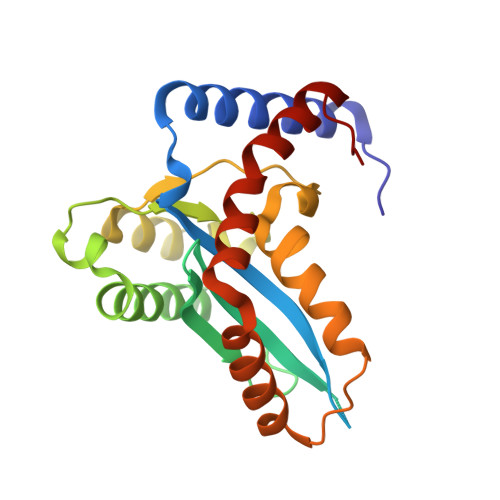Structural Basis of Mos1 Transposase Inhibition by the Anti-retroviral Drug Raltegravir.
Wolkowicz, U.M., Morris, E.R., Robson, M., Trubitsyna, M., Richardson, J.M.(2014) ACS Chem Biol 9: 743-751
- PubMed: 24397848
- DOI: https://doi.org/10.1021/cb400791u
- Primary Citation of Related Structures:
4MDA, 4MDB - PubMed Abstract:
DNA transposases catalyze the movement of transposons around genomes by a cut-and-paste mechanism related to retroviral integration. Transposases and retroviral integrases share a common RNaseH-like domain with a catalytic DDE/D triad that coordinates the divalent cations required for DNA cleavage and integration. The anti-retroviral drugs Raltegravir and Elvitegravir inhibit integrases by displacing viral DNA ends from the catalytic metal ions. We demonstrate that Raltegravir, but not Elvitegravir, binds to Mos1 transposase in the presence of Mg(2+) or Mn(2+), without the requirement for transposon DNA, and inhibits transposon cleavage and DNA integration in biochemical assays. Crystal structures at 1.7 ? resolution show Raltegravir, in common with integrases, coordinating two Mg(2+) or Mn(2+) ions in the Mos1 active site. However, in the absence of transposon ends, the drug adopts an unusual, compact binding mode distinct from that observed in the active site of the prototype foamy virus integrase.
Organizational Affiliation:
School of Biological Sciences, University of Edinburgh , Mayfield Road, Edinburgh EH9 3JR, United Kingdom.


















